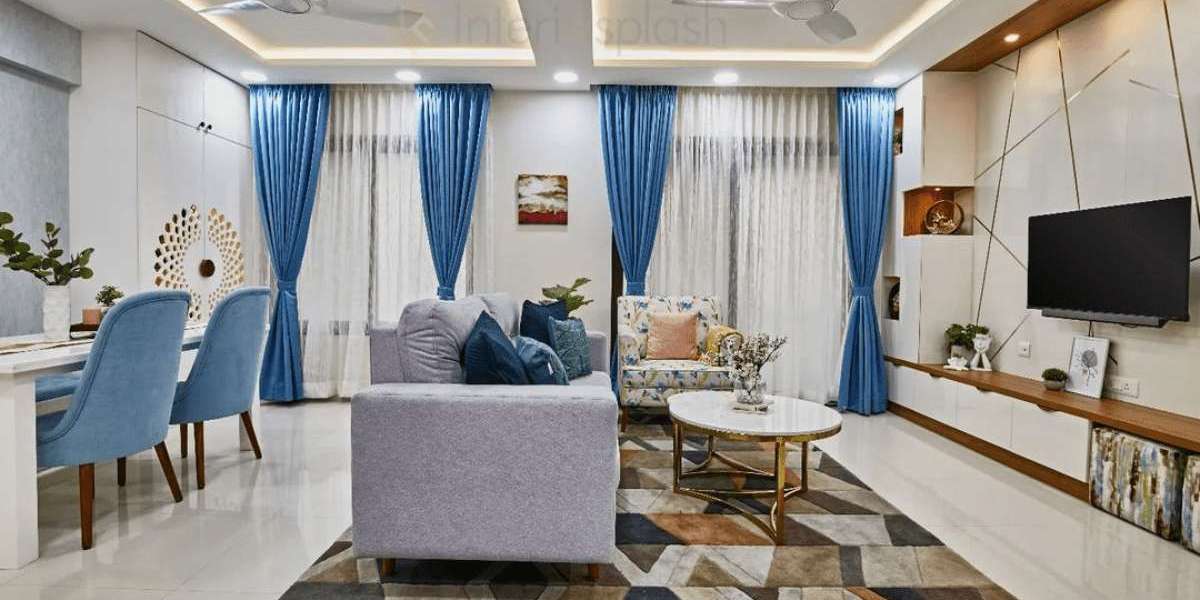Introduction
Embarking on an interior design project can be both exciting and daunting. One of the most critical aspects of planning your project is understanding the costs associated with hiring an interior company in Bangalore. The pricing structure of interior design services can be complex, with various factors influencing the overall cost. This guide will help you navigate the intricacies of pricing, providing a clear picture of what to expect and how to budget effectively for your interior design project.
Key Factors Affecting Interior Design Costs
1. Scope of the Project
The scope of your project significantly impacts the cost. Interior companies price their services based on the complexity and size of the project. Key considerations include:
- Room Size: Larger spaces require more materials and labor.
- Design Complexity: Custom designs and high-end materials can increase costs.
- Project Duration: Longer projects may incur additional fees.
2. Type of Interior Design Service
Interior design companies offer various services, each with its pricing model. Here are common types of services:
- Consultation Fees: Charged for initial design advice and assessments.
- Full-Service Design: Includes everything from concept development to final installation.
- Project Management: Covers coordination of contractors and suppliers.
- Design Only: Provides design plans without implementation.
3. Experience and Reputation of the Interior Company
An interior company’s reputation and experience can influence pricing. Consider the following:
- Reputation: Established companies with a strong portfolio often charge higher fees.
- Experience: More experienced designers may command premium rates for their expertise.
4. Location and Market Conditions
Geographical location plays a crucial role in pricing. Factors to consider include:
- Local Market Rates: Costs can vary widely based on regional market conditions.
- Cost of Living: Higher cost-of-living areas generally have higher service rates.
Pricing Models Used by Interior Companies
1. Flat Fee
A flat fee is a predetermined cost for the entire project. This model provides clarity on total expenses upfront. Benefits include:
- Predictability: Fixed costs help in budgeting.
- Simplicity: Easy to understand and manage.
2. Hourly Rate
Interior companies may charge an hourly rate for their services. This model is suitable for smaller projects or consultations. Key points to consider:
- Transparency: Pay only for the hours worked.
- Flexibility: Ideal for projects with variable scopes.
3. Percentage of Project Cost
Some interior companies charge a percentage of the total project cost. This model aligns the designer’s fee with the project’s scale and complexity. Key aspects include:
- Alignment of Interests: Designers are motivated to stay within budget.
- Variable Costs: Costs may increase with project scope.
4. Per-Square-Foot Pricing
Pricing based on square footage is common for larger projects. This model involves:
- Scalability: Costs increase with the size of the area.
- Standardization: Easier to compare with other companies.
Additional Costs to Consider
1. Materials and Furnishings
The cost of materials and furnishings is often separate from design fees. Factors to consider:
- Quality of Materials: Higher quality materials can significantly increase costs.
- Custom Furnishings: Bespoke items are generally more expensive.
2. Contractor Fees
Interior design projects often require contractors for construction and installation. Key points include:
- Separate Billing: Contractors may bill separately from the interior company.
- Coordination Costs: Interior companies may charge for managing contractor services.
3. Travel Expenses
For projects outside the company’s local area, travel expenses may be incurred. Consider:
- Distance: Costs increase with the distance traveled.
- Frequency: Frequent visits can add up.
How to Budget for Your Interior Design Project
1. Define Your Budget
Establish a clear budget before contacting interior companies. Consider:
- Total Budget: Include design fees, materials, and additional costs.
- Contingency Fund: Allocate extra funds for unforeseen expenses.
2. Get Multiple Quotes
Obtain quotes from several interior companies to compare pricing. Key steps include:
- Detailed Proposals: Request detailed breakdowns of costs.
- References: Check previous client experiences to gauge value.
3. Review Contracts Carefully
Before signing a contract, ensure you understand all terms. Consider:
- Inclusions: Verify what is covered in the quoted price.
- Payment Terms: Clarify payment schedules and conditions.
Conclusion
Understanding the costs associated with hiring an interior designer company in Bangalore is essential for a successful design project. By considering factors such as project scope, service types, and pricing models, you can make informed decisions and effectively manage your budget. Whether you opt for a flat fee, hourly rate, or another pricing structure, thorough planning and research will help you achieve your design goals without unexpected financial surprises.



